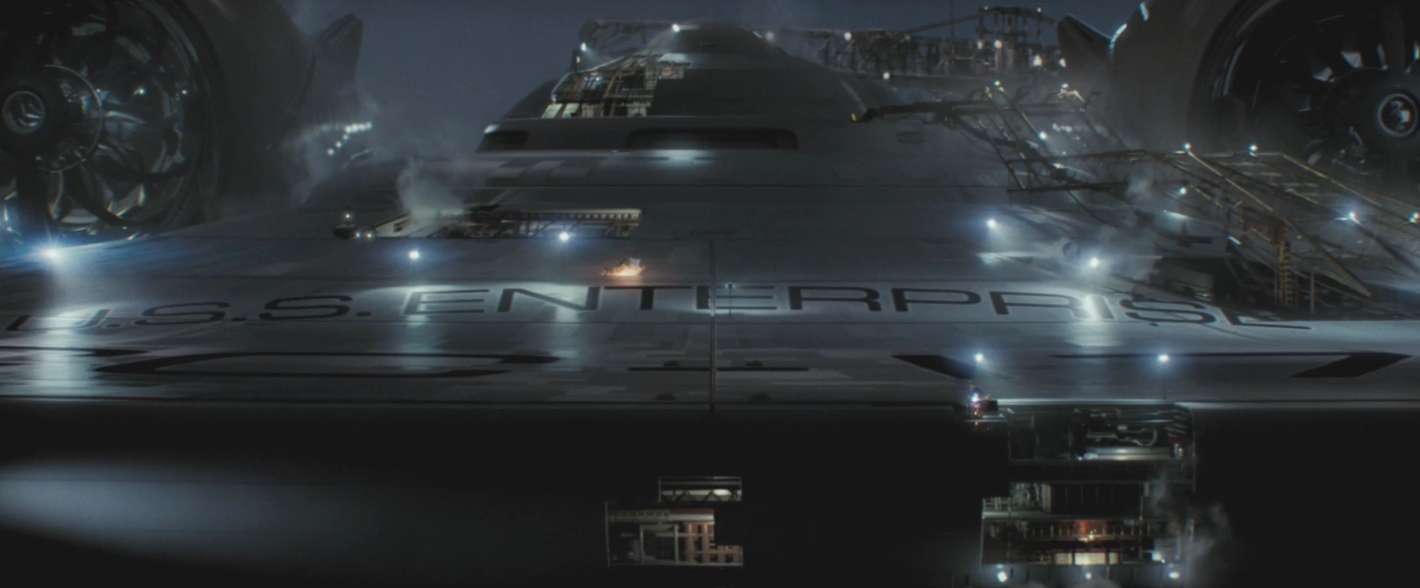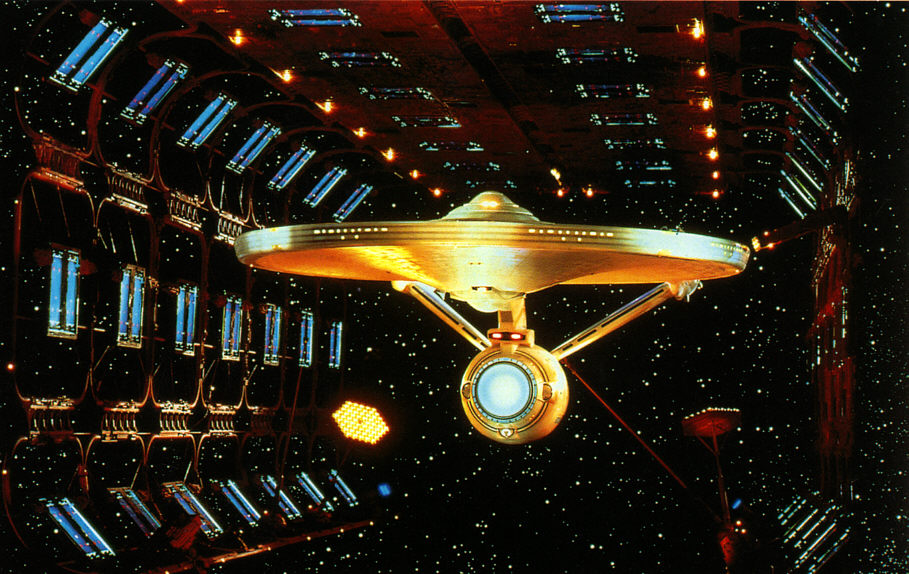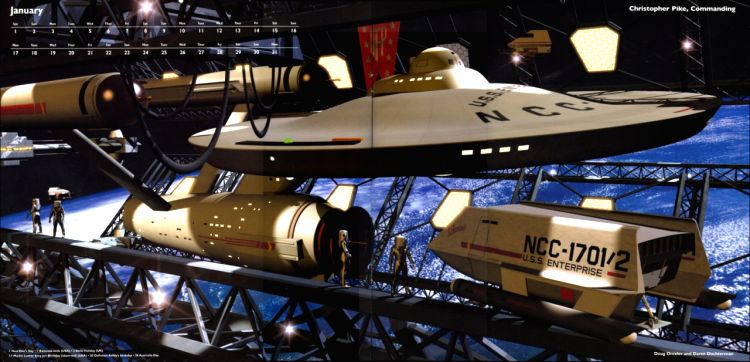
My colleague Tim Burke’s pointed rebuttal to critics of the film adaptation of The Golden Compass – who charge that the movie lacks the theological critique and intellectual heft of Phillip Pullman’s source novel – caught my eye, not just because I’m a fan of the books and intend to see the movie as soon as end-of-semester chaos dies down, but because I’ve spent the last week talking about transmedia franchises with my Intro to Film class.
To recap the argument, on one side you have the complaint that, in bringing book to screen, Pullman’s central rhetorical conceit has been cruelly compromised. The adventure set forth in the three volumes of His Dark Materials (The Golden Compass, The Subtle Knife, and The Amber Spyglass) unfolds against a world that is but one of millions in a set of alternate, overlapping realities. But the protagonist Lyra’s cultural home base is fearfully repressed by religious authorities whose cosmology allows for no such “magical thinking” – and whose defense of its ideology is both savagely militaristic and a thin veil over a much larger network of conspiracy and corruption. (Really, right-wing moral guardians should not be objecting to how Pullman treats the Church, but how he nails the current U.S. administration.) But, the charge goes, the movie has trimmed away the more controversial material, leaving nothing but a frantic romp through tableaux of special-effects-dependent set design and, in the case of Iorek Byrnison and the daemons, casting.
On the other side you’ve got positions like Tim’s, which welcome many of the excisions because they actually improve the story. As Pullman gets cranking, especially in the concluding Amber Spyglass, his narrative becomes both attenuated and obese, subjective time slowing to a crawl while mass increases to infinity like an space traveler moving near the speed of light. Personally, I was mesmerized by Spyglass’s long interlude in the Land of the Dead, which in its beautifully arid and disturbing tedium managed to remind me simultaneously of L’Avventura, Stalker, and Inland Empire. But it’s hard to disagree, especially when Tim reminds me how turgid and didactic C. S. Lewis’s The Last Battle got, that while we all like to have our intellect and imagination stirred, very few of us like to be lectured.
Me, I’ll suspend judgment on the movie until I see it – a strategy that worked well with The Mist, which I enjoyed astronomically more than Stephen King’s original novella. But I do sense in the debate around Compass’s political pruning an opportunity to air my concern with transmedia storytelling, or rather with the discursive framework that media scholars are evolving to talk about and critique transmedia “operations.”
In a nutshell, and heavily cribbed from Henry Jenkins’s Convergence Culture, storytelling on a large scale in contemporary media involves telling that tale across a number of different platforms, through different media, all of which are delegated one part of the fictional universe and its characters, but none of which contains the whole. While Star Trek and Star Wars did this starting in the 1960s and 1970s respectively, current exemplars like The Matrix bring the logic of transmediation to its full, labyrinthine flower. The three installments of the 1999-2003 trilogy are but land masses in a crowded sea of other textual windows into the Matrix “system”: videogames, websites, TV spots, comics, etc. each play their part. Each text is an entry point to the franchise; ideally, each stands alone on its artistic merits while contributing something valuable to the whole; and the pleasurable labor of transmedia audiences is to explore, collect, decrypt, and discuss the fragments as an ongoing act of consumption that is also, of course, readership.
Admittedly, Pullman’s trilogy doesn’t lend itself perfectly to transmediation any more than The Lord of the Rings did. When you’ve got to contend with an “original,” pesky concepts like canonicity and (in)fidelity creep in. Fans will always measure the various incarnations of Harry Potter against Rowling’s books, just as J. R. R. Tolkien’s fans did with Peter Jackson’s movies. But The Matrix or Heroes or Halo, which don’t owe allegiance to anything except their own protocols of ongoing generation, are freed through a kind of authorless solipsism to expand indefinitely through “storyspace,” no version more legitimate than another. (I’m not saying those franchises are literally authorless, but that they lack a certain auratic core of singular, unrepeatable authorship: instead they are team enterprises, all the more appealing to those who wish to create more content.)
There are some neat felicities between the transmedia system’s sliding panels — each providing a partial slice of a larger world — and the cosmological superstructure of His Dark Materials. (One could even argue that franchises come with their own pretender-gods, the corporations that seek to brand each profitable reality and police its official and unofficial uses, thus contradicting the avowed openness of the system: New Line as Magisterium.) But to come back to the question with which I opened, does it matter that, in turning Golden Compass the book into Golden Compass the movie – surely the first and most crucial “budding” of a transmedia franchise — some of the text’s teeth have been pulled?
I suggest that one danger of transmedia thinking is that it abandons, or at least dilutes, the concept of adaptation – a key tool by which we trace genealogical relationships within a world of hungrily replicating media. If A is an adaptation of B, then B came first; A is a version, an approximation, of B. We assess A against B, and regardless of which comes out the victor (after all, there have been good movies made of bad books), we understand that between A and B there are tradeoffs. There have to be, in order to translate between media, where 400 pages or the premise of a TV series rarely fit into a feature-length film.
The contradiction is that, while we would not usually expect an adaptation to precisely replicate the ideological fabric of its source, and can even imagine some that consciously go against the grain of the original, transmedia models, which talk of extensions rather than adaptations, assume a much more transparent mapping of theme and content. We expect, that is, the various splinter worlds of Star Trek and The Matrix to agree, in general, on the same ideological message: the commonsense “talking points” of their particular worldviews. We may get different perspectives on the franchise diegesis, but the diegesis must necessarily remain unbroken as a backdrop – or else it stops being part of the whole, abjected into a wholly different and incompatible franchise. (There’s a reason why Darth Vader will never meet Voldemort, except in fan fiction, which is a whole ‘nother ball of transmedial wax.)
Golden Compass’s critical “neutering” in the process of its replication reminds us that different media do different things, and that this has political import. Jenkins writes that, in transmedia, each medium plays to its strengths: videogames let you interact with – or inhabit — the story’s characters, while novelizations give internal psychological detail or historical background. Comic books and artwork visualizes the fiction, while model kits, costumes, and collectibles solidify and operationalize its props. Precisely because of the logic of transmedia, or distributed storytelling, we don’t expect these fragments to carry the weight of the whole. But each medium promotes through its very codes, technologies, and operations a particular set of understandings and values (a point not lost on Ian Bogost and other videogame theorists who talk about “persuasive games” and “procedural rhetoric”), hence translation always involves a kind of surgery, whether to expunge or augment.
Golden Compass may fail at the box office, which would end the Dark Materials franchise then and there (or maybe not – transmedia are as full of surprise resurrections and reboots as the stories told within them). But director/screenwriter Chris Weitz has made no secret of the fact that he sanitized the book’s theological transgressions in hopes that, having found an audience, he can go on to shoot the remaining two books more as Pullman intended. Regardless of what happens to this particular franchise, it’s our responsibility as scholars and critics – hell, as people – to be sensitive to, and wary about, the ideological filters and political compromises that fall into place, like Dust, as stories travel and multiply.





